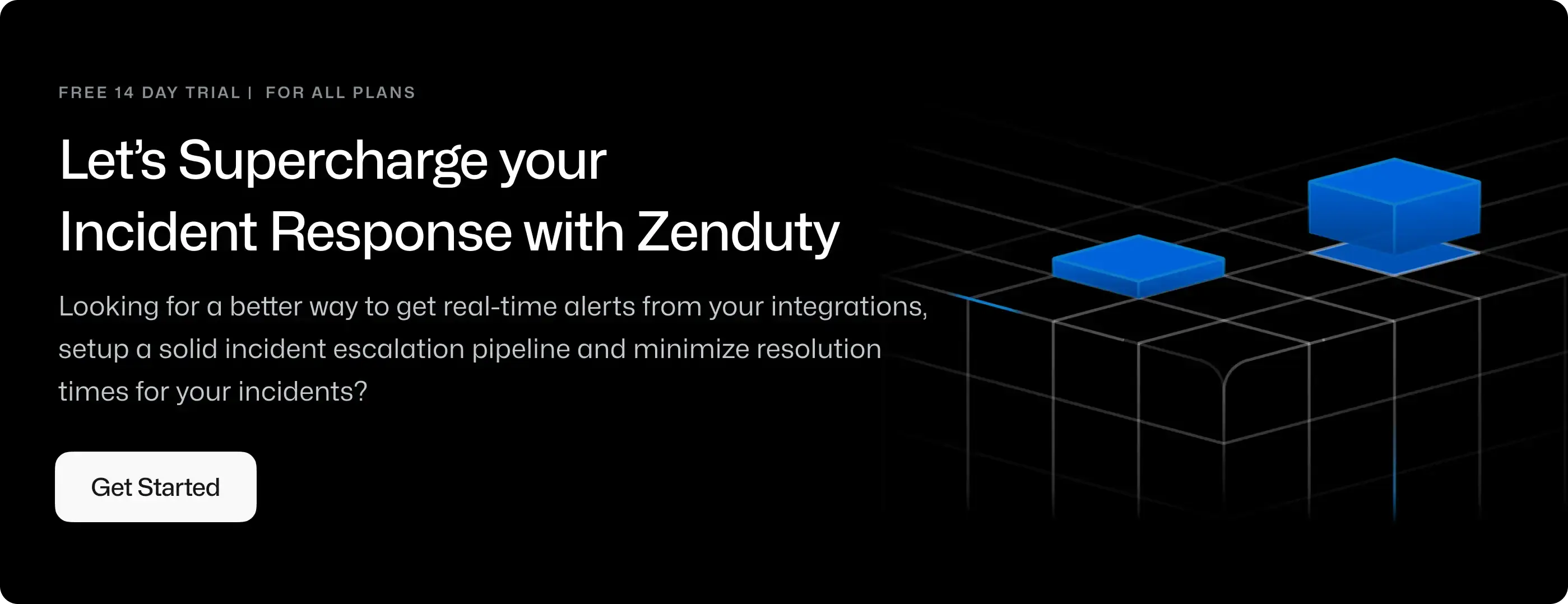Pingometer Integration Guide
Pingometer helps you gain instant insights into your website’s availability and performance.
What can Zenduty do for Pingometer users?
With Pingometer's Integration, Zenduty sends new Pingometer website/service downtime alert to the right team and notifies them based on on-call schedules via email, text messages(SMS), phone calls(Voice), Slack, Microsoft Teams and iOS & Android push notifications, and escalates alerts until the alert is acknowledged or closed. Zenduty provides your NOC, SRE and application engineers with detailed context around the Pingometer website/service downtime alert along with playbooks and a complete incident command framework to triage, remediate and resolve incidents with speed.
Whenever Pingometer detects that a website/service is down after pinging the website/server, it triggers an alert in Zenduty. Zenduty will then create an incident. When that website/service goes back up, Zenduty will auto-resolve the incident.
You can also use Alert Rules to custom route specific Pingometer alerts to specific users, teams or escalation policies, write suppression rules, auto add notes, responders and incident tasks.
To integrate Pingometer with Zenduty, complete the following steps:
In Zenduty:
-
To add a new Pingometer integration, go to Teams on Zenduty and click on the team you want to add the integration to.
-
Next, go to Services and click on the relevant Service.
-
Go to Integrations and then Add New Integration. Give it a name and select the application Pingometer from the dropdown menu.
-
Go to Configure under your Integrations and copy the Webhook URL generated.
In Pingometer:
-
Log in to Pingometer. Click on Notifications on the menu, and then Integrations.
-
Click on New Profile on the top right corner of the screen.
-
Set the Provider Type as Custom Postback URL (Webhook).
-
Enter the name of the integration and paste the link copied earlier under URL and Save.

-
Click on Monitoring on the menu. Under Monitoring, click on Check and Add New.
-
Enter the name of check and set the Check Interval.


-
Set the check type as the application for which we are monitoring. In this case, we set the check type as API and then select the locations for which we are monitoring.
-
Set the check steps as follows:
- GET and enter the URL of API.
- Set the conditon as http status should be 200.

-
Click on Save.
